Myths about teaching can hold you back
- Year 5
Explain that decimal numbers with tenths can be composed additively
I can explain that decimal numbers with tenths can be represented as addition.
- Year 5
Explain that decimal numbers with tenths can be composed additively
I can explain that decimal numbers with tenths can be represented as addition.
These resources were made for remote use during the pandemic, not classroom teaching.
Switch to our new teaching resources now - designed by teachers and leading subject experts, and tested in classrooms.
Lesson details
Key learning points
- Use part-part-whole models to partition decimal numbers into the whole number and fraction parts.
- Number with whole number and decimal parts can be represented as addition and subtraction equations.
- The whole number and decimal parts of a number can be represented on a number line.
Keywords
Decimal number - A decimal number has a decimal point followed by digits that show the fractional part.
Partition / partitioning - Partitioning is the act of splitting an object or value down into smaller parts..
Equation - An equation is used to show that one number, calculation or expression is equal to another. For example: 3 + 4 = 7
Expression - An expression contains one or more values, where each value is separated by an operator. For example: 3 + 4
Common misconception
Pupils understand the equals sign as 'where the answer is' rather than equality between expressions.
Spend time moving addition and subtraction expressions to either side of the equals sign using numbers within 10 before moving to tenths.
To help you plan your year 5 maths lesson on: Explain that decimal numbers with tenths can be composed additively, download all teaching resources for free and adapt to suit your pupils' needs...
To help you plan your year 5 maths lesson on: Explain that decimal numbers with tenths can be composed additively, download all teaching resources for free and adapt to suit your pupils' needs.
The starter quiz will activate and check your pupils' prior knowledge, with versions available both with and without answers in PDF format.
We use learning cycles to break down learning into key concepts or ideas linked to the learning outcome. Each learning cycle features explanations with checks for understanding and practice tasks with feedback. All of this is found in our slide decks, ready for you to download and edit. The practice tasks are also available as printable worksheets and some lessons have additional materials with extra material you might need for teaching the lesson.
The assessment exit quiz will test your pupils' understanding of the key learning points.
Our video is a tool for planning, showing how other teachers might teach the lesson, offering helpful tips, modelled explanations and inspiration for your own delivery in the classroom. Plus, you can set it as homework or revision for pupils and keep their learning on track by sharing an online pupil version of this lesson.
Explore more key stage 2 maths lessons from the Compose and calculate with decimals including column addition and subtraction unit, dive into the full primary maths curriculum, or learn more about lesson planning.

Licence
Prior knowledge starter quiz
6 Questions
Q1.Tick the representations that are expressions.
Q2.In this part-part-whole model, which value represents the whole?
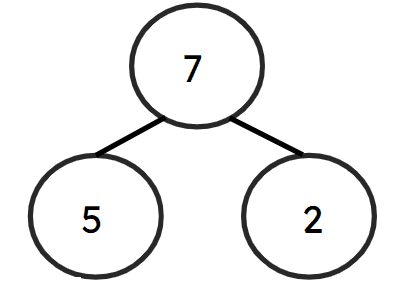
Q3.If 56 was to be partitioned into tens and ones, what would each part be?
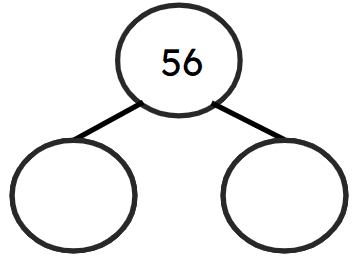
Q4.Which equations represent this part-part-whole model?
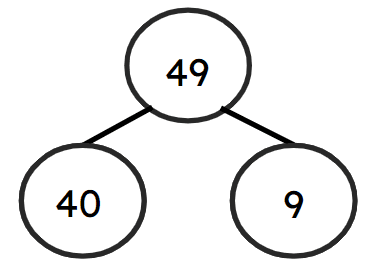
Q5.Complete the sentence. is one tenth the size of 4.
Q6.Write the following mixed number as a decimal.
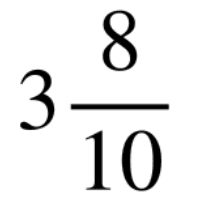
Assessment exit quiz
6 Questions
Q1.Fill in the missing number: 3 + 0.4 = ___
Q2.Which part-part-whole model would not represent 0.6 + 3 = 3.6
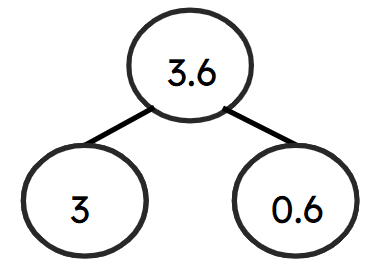
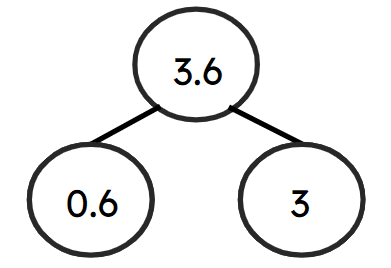
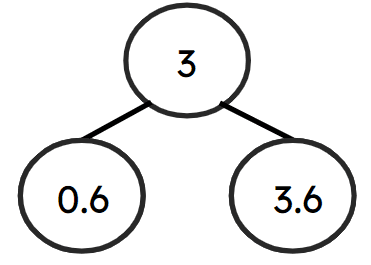
Q3.What is the missing part: 5.6 = 5 + ___
Q4.Which equation would not represent the part-part-whole model.

Q5.Look at the image. Match the missing number to the equation where it is required.

4.6 − ___ = 0.6
4 = 4.6 − ___
0.6 = ___ − 4
Q6.Alex is 1 m tall. Andeep is 1.3 m tall. How much taller is Andeep than Alex? Remember to include the correct unit of measure in your answer



